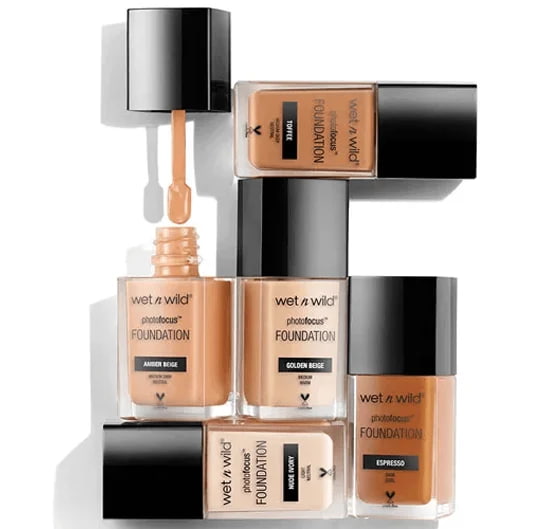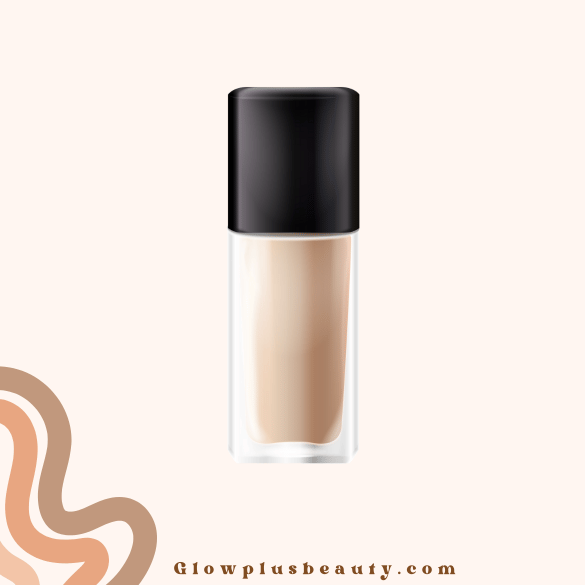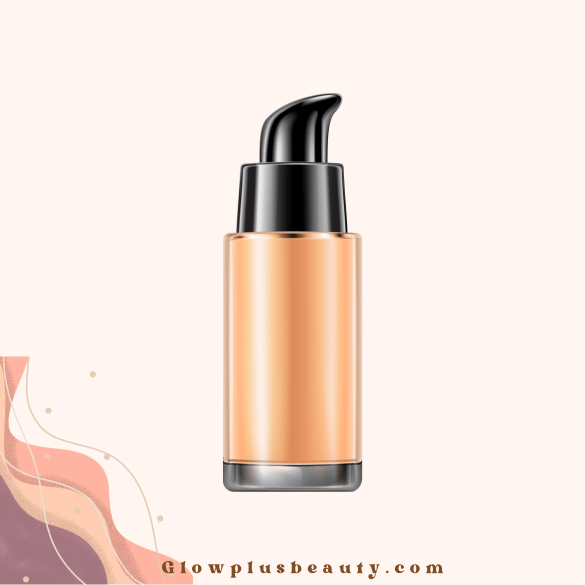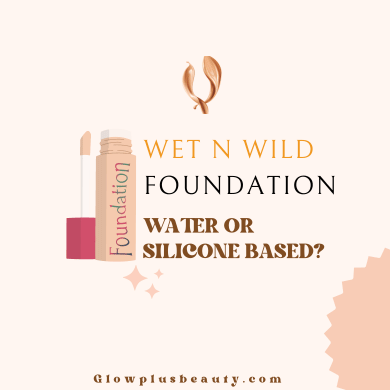Is Wet n Wild Foundation Water Based

Choosing the right foundation can be tricky, especially when trying to figure out if it’s water-based or silicone-based.
Many of us struggle to understand whether their foundation is water-based or silicone-based, and brands often don’t make this information clear.
Why is that?
One reason is the marketing strategy.
Brands can attract a broader audience by keeping their formula details vague,making sure they don’t exclude customers with specific preferences.
Additionally, formulations can be complex, often containing a mix of both water and silicones, making it hard to categorize them strictly as one or the other.
But don’t worry – we’re here to help!
In this post, we’ll clear up the mystery and tell you exactly what type of base Wet n Wild Foundation has.
Understanding this can make a big difference in how the product works for your skin and helps you achieve your desired look.
Without further ado, Let’s get started:
Related:
- Is Rare Beauty Foundation Water-Based, Oil-Based or Silicone-Based?
- Is Huda Beauty Foundation Water Based or Silicone Based?
- Is the Rare Beauty Blush Water-Based or Silicone-Based?
- Is Morphe Foundation Water-Based or Silicone-Based? A Comprehensive Analysis
- Is NARS Foundation Water-Based or Silicone-Based?
- Is Maybelline Superstay Foundation Water Based or Silicone Based?
- Is L’Oreal Infallible Foundation Water-Based Or Silicone Based?
- Is Fenty Foundation Water-Based Or Silicone-Based.
What Are Water-Based and Silicone-Based Foundations?
Before we delve into the specifics of Wet n Wild’s foundation, let’s first understand the two primary types of foundation bases.
Water-based foundation:

Water-based foundations are exactly what they sound like, their primary ingredient is water.
These foundations are typically lighter in texture and offer a more natural, sheer coverage.
They’re ideal for those with sensitive or acne-prone skin, as they’re less likely to clog pores and cause breakouts.
Silicone-Based Foundation:

Silicone-based foundations, on the other hand, have silicone (ingredients like dimethicone, and Cyclopentasiloxane) at the top of their ingredient lists.
These foundations are known for their smooth application, providing a blurring effect that minimizes the appearance of pores and fine lines.
They tend to have a longer wear time and offer medium to full coverage.
Comparison b/w Water-based foundation & Silicone based foundation
The Science Behind Foundation Bases
Water-Based Foundations
- Hydration: They hydrate the skin due to high water content.
- Breathability: Allow the skin to breathe, reducing the risk of breakouts.
- Consistency: Tend to be thinner and spread easily.
Silicone-Based Foundations
- Smoothing Effect: Silicones create a barrier that smooths out skin texture.
- Longevity: Often longer-lasting and more resistant to sweat and oil.
- Blendability: Provides a more even application and better blending.
How to Tell if Your Foundation is Water-Based or Silicone-Based

When you’re standing in the makeup aisle, pondering over a plethora of pretty bottles, knowing whether a foundation is water-based or silicone-based can be as simple as reading a recipe.
Here’s how:
First Step:
Check the ingredients list: Flip the bottle around and find the list of ingredients. This is where the story of the foundation’s base begins.
Second Step:
Spot the First Five: The first five ingredients usually tell you what the foundation is primarily made of. They hold the secret to the base.
Look for Water: If you see ‘water’ or ‘aqua’ listed as one of the first ingredients, it’s a good sign that the foundation is water-based.
Search for Silicones: Ingredients ending in -cone, -siloxane, or -methicone (like dimethicone or cyclopentasiloxane) are silicones. If these are in the first five ingredients, the foundation is likely silicone-based.
Done
If both water and silicone ingredients appear within the first five ingredients on the label, it means the foundation has a mix of both bases.
Here’s what you can consider:
Primary Base: The ingredient that is listed first has the highest concentration.
If water is listed before silicone, the foundation is more water-based, and lightweight, but not entirely Water-based.
If you’re looking for a water-based foundation, it’s best to look for products where water is listed as the first ingredient and does not contain silicones at top of the list.( at least not at first five)
Do the Mix Test:
If you’re still unsure, try mixing the foundation with another product you know is water-based (like a moisturizer).
If they blend smoothly together, your foundation is probably water-based. If they repel each other or bead up, it’s likely silicone-based.
The Texture Tells:
Apply a small amount to the back of your hand. Water-based foundations tend to absorb quickly and feel lighter, while silicone-based foundations may feel silkier and sit on top of the skin a bit more.
Remember, the right foundation for you is the one that feels good on your skin, matches your skin tone, and gives you the finish you love.
The post is about “Is Wet n Wild Foundation Water Based or Silicone Based”
Is Wet n Wild Foundation Water-Based or Silicone-Based?
Now, let’s focus on Wet n Wild’s Photofocus Foundation.
Wet n Wild’s Photofocus Foundation ingredients list,
Isododecane, Cyclopentasiloxane, Water/Eau, Glycerin, Cyclohexasiloxane, Dimethicone, Butylene Glycol, Dimethicone, PEG-10 Dimethicone, Disteardimonium Hectorite, Adipic Acid/Neopentyl Glycol Crosspolymer, Caprylyl Glycol, Silica, Sodium Chloride, Sorbitan Sesquioleate, Lecithin, Polyglyceryl-4 Isostearate, Cetyl PEG/PPG-10/1 Dimethicone, Hexyl Laurate, Polysilicone-11, Isopropyl Titanium Triisostearate, Laureth-12, Phenoxyethanol, Ethylhexylglycerin, Titanium Dioxide/Ci 77891, Mica, Iron Oxide/Ci 77491, Ci 77492, Ci 77499Source: Incidecoder
After a close inspection of the ingredients, it’s clear that silicones take center stage.
The ingredient list reveals the presence of Cyclopentasiloxane, and Dimethicone among the first few ingredients.
These are all forms of silicone, which means Wet n Wild’s Photofocus Foundation is silicone-based.
Now, let’s focus on The Wet n Wild Photo Focus Dewy Foundation
The Wet n Wild Photo Focus Dewy Foundation ingredients list,
Water/Eau, Cyclopentasiloxane, C12-15 Alkyl Benzoate, Diphenylsiloxy Phenyl Trimethicone, PEG-10 Dimethicone, Isopentyldiol, Glycerin, Butylene Glycol Dicaprylate/Dicaprate, Pentylene Glycol, Synthetic Fluorphlogopite, Lauryl PEG-10 Tris(Trimethylsiloxy)silylethyl Dimethicone, Magnesium Sulfate, Trimethylsiloxysilicate, Phenoxyethanol, Disteardimonium Hectorite, Vinyl Dimethicone/Methicone Silsesquioxane Crosspolymer, Sorbitan Isostearate, Triethoxycaprylylsilane, Ethylhexylglycerin, Fragrance(Parfum), Disodium EDTA, Dimethicone, Dimethicone/Vinyl Dimethicone Crosspolymer, Hydrogenated Castor Oil IsostearateAlthough here we can see water is listed as the first ingredient, the presence of multiple silicone ingredients at the top five list classifies it as a silicone-based foundation.
Between Wet n Wild Photo Focus and Dewy foundations, the Dewy version is more hydrating and moisturizing
Wrapping up: Is Wet n Wild Foundation Water Based or Silicone Based
It’s all about “Is Wet n Wild Foundation Water Based or Silicone Based?” we can say Wet n Wild Foundation is predominantly silicone-based Foundation.
So, if you’re looking for a silicone-based foundation, the Wet n Wild Photofocus Foundation fits the bill! 😊
Or if you have acne-prone skin, I’d recommend staying away from it since silicone can sometimes feel heavy on very oily skin, potentially exacerbating oil production and potentially leading to breakouts.
The post is about “Is Wet n Wild Foundation Water Based or Silicone Based”



